Future-Proof Your Business with Structured Network Cabling
Published: 2023-06-08 | Last updated: September 2025
Key Takeaway: Structured network cabling forms the backbone of reliable business operations, providing an organized infrastructure that supports current needs while adapting to future technology demands. Professional installation reduces downtime, simplifies management, and delivers long-term cost savings through proper planning and implementation.
The foundation of every successful business operation lies in its IT infrastructure. At the heart of this infrastructure is structured network cabling—a comprehensive system that enables seamless communication, data transfer, and connectivity across your organization. This organized approach to network design has become the standard for businesses that prioritize reliability, scalability, and operational efficiency.
Modern businesses depend on robust network infrastructure to support everything from basic internet connectivity to advanced applications like video conferencing, cloud computing, and IoT device management. Understanding how structured cabling systems work and their benefits helps business owners make informed decisions about their technology investments.
Table of Contents
- 1 Understanding Structured Network Cabling Systems
- 2 Comprehensive Benefits of Professional Network Cabling
- 3 Industry Standards and Compliance Requirements
- 4 Planning and Implementation Best Practices
- 5 Choosing Between Cable Types and Technologies
- 6 Integration with Modern Network Infrastructure
- 7 Maintenance and Lifecycle Management
- 8 Making the Investment Decision
- 9 Frequently Asked Questions
- 9.0.1 How long does structured cabling typically last?
- 9.0.2 Can structured cabling support wireless networks?
- 9.0.3 What's the difference between Cat6 and Cat6A for business use?
- 9.0.4 How much does professional network cabling installation cost?
- 9.0.5 Should I choose copper or fiber-optic cabling?
- 9.0.6 Can I upgrade my existing cabling system gradually?
Understanding Structured Network Cabling Systems
Structured cabling, also known as structured wiring, represents a standardized approach to building telecommunications infrastructure. Unlike point-to-point wiring solutions, structured systems use organized pathways and spaces to create a unified network that serves multiple applications through a single infrastructure.
The system consists of six main subsystems that work together:
Entrance Facilities
The point where outside cabling connects to the building's internal network infrastructure.
Equipment Rooms
Centralized spaces housing network equipment, servers, and telecommunications hardware.
Backbone Cabling
High-capacity cables connecting equipment rooms, telecommunications rooms, and entrance facilities.
Telecommunications Rooms
Distributed connection points that serve specific areas or floors within the building.
Horizontal Cabling
Cables running from telecommunications rooms to individual work areas and device connections.
Work Area Components
End-user connection points, including wall jacks, patch cables, and device connections.
Cable Types and Performance Standards
Modern structured cabling systems primarily use two types of media: copper twisted-pair cables and fiber-optic cables. Each serves specific purposes based on distance requirements, bandwidth needs, and environmental factors.
Copper twisted-pair cables remain the most common choice for horizontal cabling due to their cost-effectiveness and versatility. Current standards include:
| Cable Category | Maximum Speed | Typical Applications |
|---|---|---|
| Cat 6 | 1 Gbps (up to 100m) | Standard office networks, VoIP |
| Cat 6A | 10 Gbps (up to 100m) | High-performance networks, future-proofing |
| Cat 8 | 25-40 Gbps (up to 30m) | Data centers, server connections |
Fiber-optic cabling uses light signals transmitted through glass or plastic strands, offering superior performance for backbone connections and high-bandwidth applications. Single-mode fiber supports longer distances and higher speeds, while multimode fiber provides cost-effective solutions for shorter runs within buildings.
Comprehensive Benefits of Professional Network Cabling
Investing in professional structured cabling delivers measurable benefits impacting daily operations and long-term business growth. These advantages become more pronounced as businesses scale and technology requirements evolve.
Simplified Network Management
Structured cabling systems transform complex network management into streamlined operations. Every cable follows standardized pathways, uses consistent labeling, and connects through organized patch panels. This organization eliminates the confusion often associated with ad-hoc wiring installations.
Network administrators can quickly identify connections, trace signal paths, and implement changes without disrupting other services. Color-coded cables, detailed documentation, and logical port assignments reduce troubleshooting time from hours to minutes. When issues arise, technicians can isolate problems to specific segments without affecting the entire network.
Enhanced Scalability and Adaptability
Business growth often requires network expansion, and structured cabling systems efficiently accommodate these changes. The standardized infrastructure supports multiple applications through the same physical cabling, eliminating the need for separate wiring systems for different services.
Proper cable management makes adding new workstations, relocating departments, or implementing new technologies straightforward. The system's modular design allows for incremental expansion without major infrastructure overhauls. Businesses can start with basic connectivity and upgrade to higher-performance applications as needs evolve.
Future Technology Support
Well-designed structured cabling supports emerging technologies, including IoT devices, advanced security systems, building automation, and high-definition video applications. The infrastructure adapts to new requirements without requiring complete replacement.
Reduced Downtime and Improved Reliability
Network downtime costs businesses productivity, revenue, and customer satisfaction. Structured cabling systems minimize downtime through improved organization, better cable management, and reduced points of failure.
Professional installation includes proper cable routing, adequate support structures, and protection from environmental hazards. These measures prevent common issues like cable damage, connector failures, and interference problems. When maintenance becomes necessary, the organized structure allows for quick repairs without disrupting unrelated services.
Redundant pathways and proper load distribution ensure that single points of failure don't compromise entire network segments. This reliability becomes crucial for businesses that depend on continuous connectivity for operations, communications, and customer service.
Long-term Cost Effectiveness
While structured cabling requires a higher initial investment than basic wiring approaches, but the long-term cost benefits are substantial. The organized infrastructure reduces ongoing maintenance costs, simplifies moves and changes, and extends the useful life of network investments.
Businesses avoid repeated wiring projects by implementing comprehensive solutions that support multiple generations of technology. The standardized approach also reduces IT staff training requirements and simplifies vendor relationships for maintenance and support services.
- Reduced labor costs for network changes and additions
- Lower equipment costs through standardized components
- Decreased troubleshooting time and associated labor expenses
- Extended equipment life through proper installation practices
- Improved productivity from reliable network performance
Support for Converged Applications
Modern businesses use networks for voice, data, video, and security applications. Structured cabling systems support this convergence through a unified infrastructure that handles multiple signal types and protocols.
Voice over IP (VoIP) systems, video conferencing platforms, security cameras, access control systems, and wireless access points connect through the same structured cabling infrastructure. This convergence simplifies management, reduces installation costs, and provides consistent application performance.
Industry Standards and Compliance Requirements
Professional network cabling follows established industry standards that ensure compatibility, performance, and reliability. These standards provide guidelines for the designing, installing, testing, and maintaining structured cabling systems.
The Telecommunications Industry Association (TIA) and Electronic Industries Alliance (EIA) jointly developed the TIA/EIA-568 standard, which defines commercial building cabling requirements. This standard covers cable specifications, connector types, testing procedures, and installation practices.
The Institute of Electrical and Electronics Engineers (IEEE) develops Ethernet standards that define how data travels over network cables. These standards specify performance requirements, signal characteristics, and compatibility guidelines for network equipment.
Key Standards Organizations
TIA (Telecommunications Industry Association): Develops cabling infrastructure standards
IEEE (Institute of Electrical and Electronics Engineers): Creates networking protocol standards
ISO/IEC (International Organization for Standardization): Establishes global cabling standards
BICSI (Building Industry Consulting Service International): Provides design and installation best practices
Certification and Testing Requirements
Professional installations include comprehensive testing to verify that cabling systems meet performance specifications. Testing covers electrical characteristics, signal integrity, and compliance with relevant standards.
Certification testing provides documented proof that the installation performs according to specifications. This documentation becomes valuable for warranty coverage, troubleshooting, and future expansion planning. Proper testing also identifies potential issues before they impact network performance.
Planning and Implementation Best Practices
Successful structured cabling projects require careful planning, considering current requirements, future growth, and operational constraints. The planning process involves site assessment, design development, and coordination with other building systems.
Effective planning starts with understanding business requirements and growth projections. This includes analyzing current network usage, identifying performance bottlenecks, and anticipating future technology needs. Professional network installation planning addresses these factors while considering budget constraints and timeline requirements.
Site Assessment and Design Considerations
A comprehensive site assessment identifies opportunities and constraints that influence cabling design. This assessment covers building architecture, existing infrastructure, environmental conditions, and regulatory requirements.
Critical Assessment Areas
Physical Infrastructure
Available pathways, ceiling spaces, conduit systems, and equipment room locations.
Environmental Factors
Temperature conditions, humidity levels, electromagnetic interference sources, and ventilation requirements.
Power and Grounding
Electrical service capacity, grounding systems, and power quality considerations.
Security Requirements
Physical security needs, access control systems, and sensitive area considerations.
Cable Management and Organization
Proper cable management ensures reliable performance and simplifies future maintenance. This includes using appropriate support structures, maintaining proper bend radii, and organizing cables for easy identification and access.
Labeling systems provide crucial information for network management and troubleshooting. Consistent labeling schemes identify cable purposes, destinations, and service classifications. Documentation should include cable schedules, port assignments, and as-built drawings that reflect actual installation conditions.
- Maintain minimum bend radius requirements for all cable types
- Avoid running data cables parallel to electrical power lines
- Use proper cable support intervals to prevent sagging and stress
- Install adequate cable management hardware in equipment rooms
- Plan for future cable additions with spare capacity in pathways
Quality Control and Testing Procedures
Professional installations include comprehensive quality control measures throughout the project. These measures include material inspection, installation monitoring, and performance testing of completed work.
Testing procedures verify that installations meet design specifications and industry standards. This includes continuity testing, performance certification, and documentation of test results. Proper testing identifies issues early in the process when corrections are less expensive and disruptive.
Choosing Between Cable Types and Technologies
Selecting appropriate cable types requires understanding application requirements, performance needs, and budget considerations. The decision impacts both initial costs and long-term network capabilities.
For most business applications, choosing between Cat6, Cat6A, and Cat8 cables depends on current speed requirements and future growth plans. Cat6 cables support gigabit speeds for standard office applications, while Cat6A provides 10-gigabit capability for high-performance networks.
Copper vs. Fiber-Optic Considerations
Copper cabling offers cost-effective solutions for most horizontal applications within buildings. It supports power delivery for devices like IP phones and wireless access points, simplifies termination procedures, and provides familiar technology for most IT staff.
Fiber-optic cabling becomes advantageous for backbone connections, long-distance runs, and high-bandwidth applications. It offers immunity to electromagnetic interference, supports much higher speeds, and provides better security against eavesdropping.
| Factor | Copper Advantages | Fiber Advantages |
|---|---|---|
| Initial Cost | Lower cable and equipment costs | Higher performance per dollar |
| Installation | Simpler termination procedures | Smaller cable size, easier pulling |
| Performance | Adequate for most applications | Superior speed and distance capability |
| Maintenance | Familiar technology for IT staff | Less susceptible to environmental issues |
Power over Ethernet (PoE) Considerations
Power over Ethernet technology delivers electrical power through network cables, eliminating the need for separate power connections for many devices. This capability influences cable selection and network design decisions.
PoE applications include IP phones, wireless access points, security cameras, and IoT sensors. Higher-power PoE standards support LED lighting, digital displays, and building automation systems. Cable selection must consider power delivery requirements alongside data transmission needs.
PoE Power Standards
PoE (802.3af): 15.4W available power for basic devices
PoE+ (802.3at): 30W available power for higher-demand devices
PoE++ (802.3bt): Up to 90W available power for advanced applications
Integration with Modern Network Infrastructure
Structured cabling systems integrate with various network technologies to create a comprehensive business infrastructure. This integration supports current operations while providing flexibility for future technology adoption.
Modern networks often combine wired and wireless technologies, requiring careful coordination between cabling infrastructure and wireless access point placement. Proper cabling design and installation provide the backbone that supports reliable wireless coverage throughout facilities.
Wireless Network Support
Wireless networks depend on strategically placed access points connected through structured cabling systems. The cabling provides data connectivity and power delivery for wireless equipment, enabling comprehensive coverage without additional electrical work.
Access point placement requires careful planning to ensure optimal coverage, minimize interference, and support expected user densities. The structured cabling system provides the flexibility to adjust access point locations as coverage requirements evolve.
Cloud and Hybrid Infrastructure Integration
Cloud computing and hybrid infrastructure models rely on robust local network connectivity to access remote services effectively. Structured cabling provides the reliable foundation for consistent performance for cloud-based applications and services.
High-quality cabling infrastructure becomes particularly important for businesses using bandwidth-intensive cloud services like video conferencing, file synchronization, and software-as-a-service applications. Poor cabling can create bottlenecks that limit the benefits of cloud investments.
Security System Integration
Modern security systems integrate closely with network infrastructure, using IP-based cameras, access control systems, and monitoring equipment. Structured cabling supports these security applications alongside traditional data networking needs.
Security system integration requires consideration of the network infrastructure's power requirements, bandwidth needs, and physical security. Proper planning ensures that security systems operate reliably without compromising other network services.
Maintenance and Lifecycle Management
Structured cabling systems require ongoing maintenance to ensure continued performance and reliability. Proper maintenance practices extend system life, prevent problems, and maintain warranty coverage.
Regular maintenance includes visual inspections, performance testing, and documentation updates. These activities identify potential issues before they impact operations and ensure that the system continues to meet performance requirements.
Documentation and Record Keeping
Comprehensive documentation provides essential information for network management, troubleshooting, and future expansion planning. This includes as-built drawings, test results, warranty information, and change records.
Documentation should be updated whenever changes are made to the cabling system, including new installations, relocations, and repairs. Accurate records reduce troubleshooting time and help ensure that changes don't compromise system performance.
Performance Monitoring and Testing
Periodic performance testing verifies that cabling systems continue to meet specifications and identifies degradation before it causes problems. Testing schedules depend on system criticality, environmental conditions, and manufacturer recommendations.
Performance monitoring can identify trends that indicate developing problems, allowing for proactive maintenance rather than reactive repairs. This approach minimizes downtime and reduces overall maintenance costs.
Making the Investment Decision
Investing in professional structured cabling requires balancing immediate costs against long-term benefits. The decision should consider current needs, growth projections, and the cost of alternative approaches.
Professional installation costs more initially than basic wiring approaches, but the long-term benefits typically justify the investment. These benefits include reduced maintenance costs, improved reliability, easier expansion, and better support for advanced applications.
Businesses should also consider the cost of poor network performance, including lost productivity, customer satisfaction issues, and competitive disadvantages. Reliable network infrastructure becomes increasingly important as businesses depend more heavily on digital technologies.
For comprehensive network planning that includes both wired and wireless components, our business network design guide provides detailed guidance on creating scalable, future-ready infrastructure solutions.
Frequently Asked Questions
How long does structured cabling typically last?
Well-installed structured cabling systems typically provide 15-20 years of reliable service. The actual lifespan depends on cable quality, installation practices, environmental conditions, and maintenance. Higher-grade cables like Cat6A often outlast the equipment they connect, making them excellent long-term investments.
Can structured cabling support wireless networks?
Yes, structured cabling provides the backbone for wireless networks by connecting wireless access points to the main network infrastructure. The cabling delivers both data connectivity and power (through PoE) to access points, enabling comprehensive wireless coverage without additional electrical work.
What's the difference between Cat6 and Cat6A for business use?
Cat6 cables support speeds up to 1 Gbps and work well for standard business applications. Cat6A cables support 10 Gbps speeds and provide better future-proofing for high-bandwidth applications. Cat6A is recommended for new installations where long-term performance is important, despite the higher initial cost.
How much does professional network cabling installation cost?
Installation costs vary depending on building size, cable types, complexity, and local labor rates. Typical costs for standard installations range from $150 to $300 per network drop. While more expensive than basic wiring, professional installation includes proper testing, documentation, and warranty coverage that justify the investment.
Should I choose copper or fiber-optic cabling?
Most businesses use copper cabling for horizontal connections to workstations and fiber-optic for backbone connections between buildings or floors. Copper provides cost-effective performance for typical office applications, while fiber offers superior performance for high-bandwidth or long-distance connections. A hybrid approach often provides the best balance of performance and cost.
Can I upgrade my existing cabling system gradually?
Yes, structured cabling systems support gradual upgrades through their modular design. You can upgrade specific segments, add new cable types, or increase capacity in high-demand areas without replacing the entire system. Proper initial design with adequate pathways and spare capacity makes future upgrades more cost-effective.
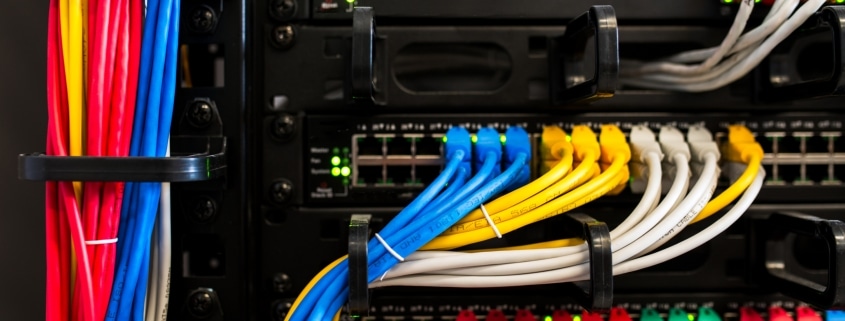
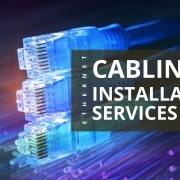


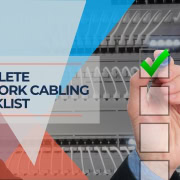
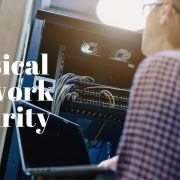
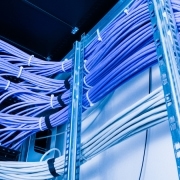

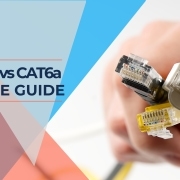


Leave a Reply
Want to join the discussion?Feel free to contribute!